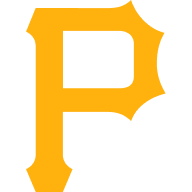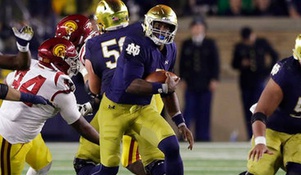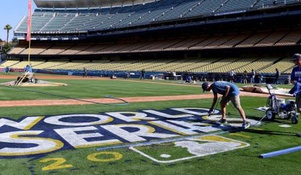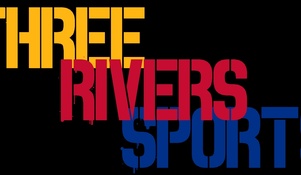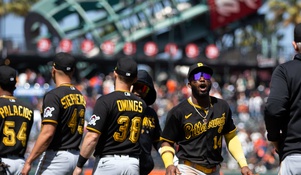Greatest Teams to Never Win a World Series in the Past 30 Years-91 Pirates
Pittsburgh.
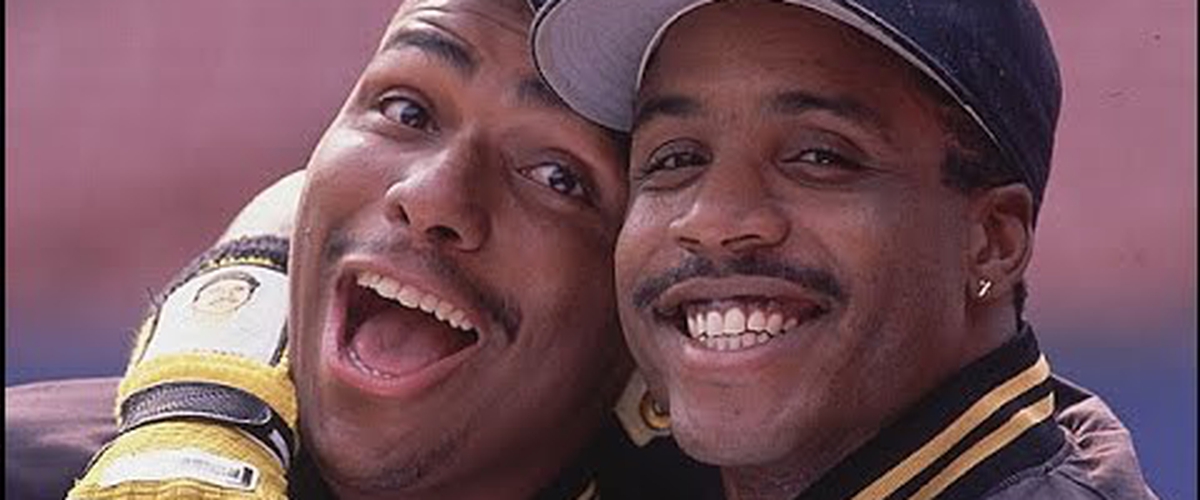
One of baseball's "low payroll" wonders. Even before baseball salaries exploded, they were not a bank-busting organization. They always did it through the farm. And you have to admire what Pittsburgh had always done, even then. They built their stars through the farm and through trades. And the names sound familiar to you: Barry Bonds, Bobby Bonilla, Andy Van Slyke, Doug Drabek, John Smiley, etc. And the thing was with those guys that whether through the farm or trade, they were together for a few years. So they endured some ugly seasons in the Steel City in the mid-80's, but as the late 80's/early 90's rolled around, the Pirates were at the front and center of the old NL East.
The Pirates won the East in 1990, but were put down by the eventual champion Reds. Why did I not put the 1990 Pirates here? They did end up having a better record than the Reds, but their pitching outside of Doug Drabek in 90 was awful (though the offense was probably more stacked that year with monster years from Bonds, Bonilla, Van Slyke, and even Sid Bream got in on the action before he left to Atlanta in 1991).
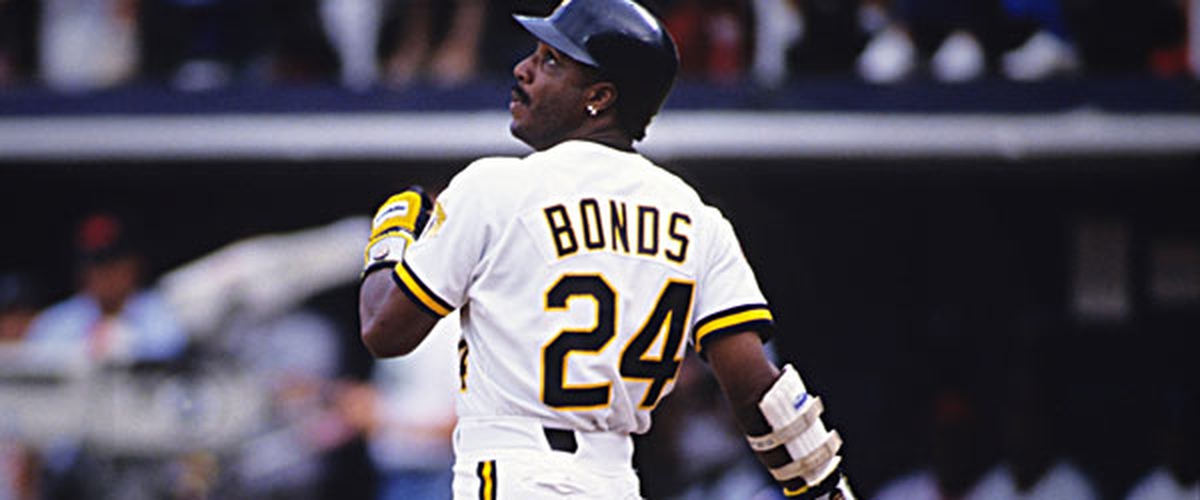
So, why were they so good? When we think of Barry Bonds today aside from the obvious PED scandal that ultimately plagued his career, we think of him as a slugging machine, hitting 40-50-60-70 HR's....with the Giants. But when I think of Barry Bonds, I think of that Pirates player who did it all back in the early 90's. He could hit, run, field, and do all the things that made him a 5-tool star. I think people forgot how AMAZING (not great, but amazing) Bonds was with Pittsburgh and then in his early time with San Francisco. And ironically, I am probably pointing out his WORST year in the 1990's in 1991. Bonds hit .292 with 24 HR, 116 RBI, but led the league in on-base at .410 and he stole 40 bases. But he was still the cog in that lineup. Then you have his other outfield counterparts, Van Slyke and Bonilla. Van Slyke it a relatively average .265 with 17 HR and 83 RBI, but like Bonds, could draw a walk as his OPS was over .800. And Bonilla hit .302 with 18 HR and drove in 100 and he too could draw walks. It made life tough on pitchers.
The infield wasn't much to write home about, but Jay Bell at that time was one of the best all-around shortstops in the NL that year as he could hit the ball (.270 with 16 HR) and his double play mate Jose Lind was very effective with the glove. And first base had a platoon of Orlando Merced and Gary Redus who combined for 17 HR and 74 RBI. Off the bench came Lloyd McClendon, who had a VERY GOOD .286 average with 7 HR. Now before you look at the offense and go "well, even with Bonds, all of the hitters had pedestrian numbers," remember they played in the massive Three Rivers Stadium, where it was not easy to hit home runs at all. Despite the HR power not being strong, they still led the NL in average, on-base, and OPS, while being 2nd in slugging.
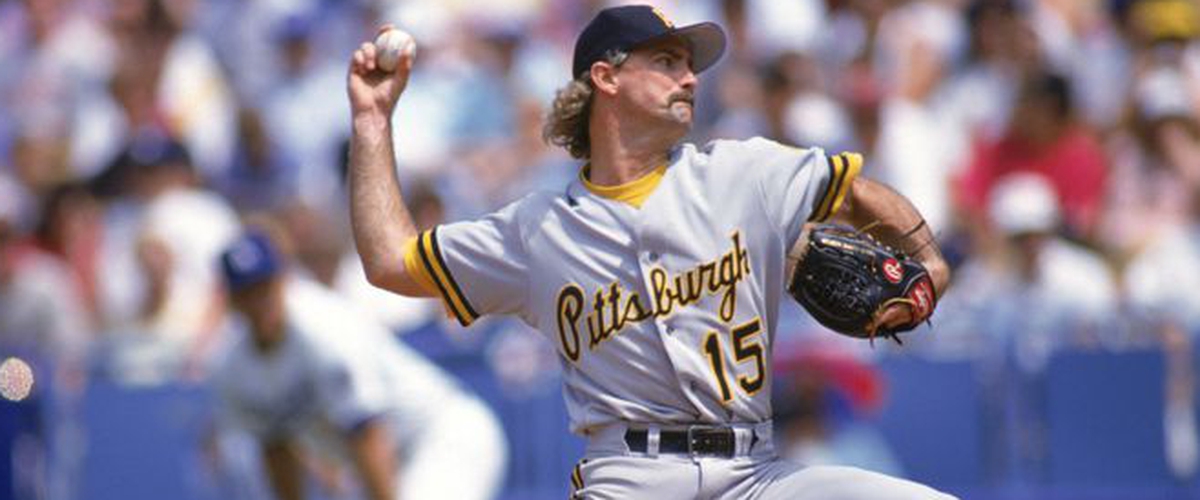
But the change came with the pitching. Drabek had an off year compared to 1990 (15-14, 3.07 ERA) but was a bulldog of pitching 5 complete games. But it was the others who picked up the slack. Zane Smith went 16-10 with an ERA of 3.20 and could argue he was their Cy Young guy that year with 6 complete games and 3 shutouts had it not been for John Smiley. Smiley drew the most attention though with being a 20-game winner and having a 3.08 ERA while finishing 3rd in the Cy Young voting. Adding on, Randy Tomlin rounded the back end with a 2.98 ERA though only going 8-7.
And I forgot to mention the Pirates were managed by Jim Leyland, who will go into the Hall of Fame at some point with what he did over his career and he was probably the right guy for the job in Pittsburgh at that time.
The Pirates, favored because of the likes of Bonds, Bonilla, and Van Slyke, rolled in the NL East. They really took charge of the division early and never looked back. St. Louis was really the lone threat to them but by August, there was a sense, even then nobody was going to catch Pittsburgh. The NL East was weak as a whole and the Pirates were a cut above the rest of the division, their 2nd straight title. And to finish what they started in 1990.
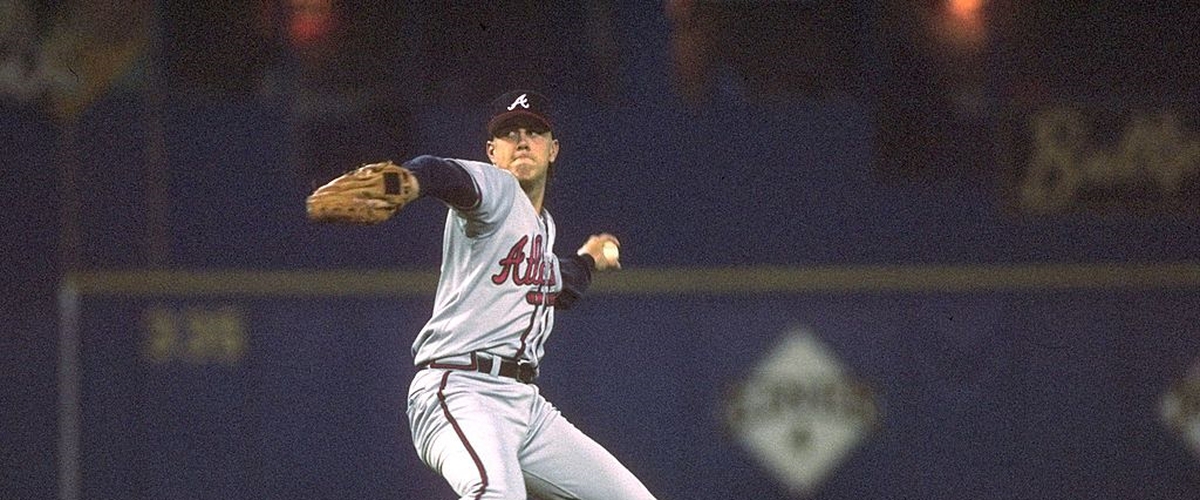
SO WHAT WENT WRONG? The Atlanta Braves. When they made the NLCS in 1991, it was a Cinderella story. Atlanta was very bad for a long time and then flipped the script and stunned the heavily favored Dodgers to win the division on the final weekend of the regular season. And the vibe was, the seasoned Pirates were facing these "who are these guys?" Braves. But the thing was, the Pirates, while they were tops on offense, Atlanta was right behind them in that. The starting pitching, however was slightly better for Atlanta, with young ace Tom Glavine who was the Cy Young winner that year and then the likes of John Smoltz and Steve Avery rounded that crew out. But the big difference was Atlanta's bullpen was far better than Pittsburgh's. Kent Mercker, Mike Stanton, and Marvin Freeman were lights out for the Braves while Atlanta had Juan Berenguer, who pitched great and then acquired Alejandro Pena, who was also lights out for the Braves. The NLCS save for Game 1 and Game 3 were nip-and-tuck pitcher's duels. However, the one guy that imploded in the NLCS was Smiley, who gave up 5 runs in Game 3 and 3 in Game 7 but didn't even make it out of the 1st inning. The Braves pitchers and the Pirates starters dueled all the way through, but while the Pirates bullpen wasn't bad in the NLCS at all, one wonders if Leyland was skeptical of using a reliever in Game 6 for Drabek in the 9th inning. Drabek showed fatigue of nearly giving up a HR to Ron Gant and then Greg Olson hit the go-ahead double.
Atlanta was a possible albatross to Pittsburgh in 1991 during the regular season too, beating the Pirates 9 out of the 12 meetings they played. So maybe the Braves were just a bad match-up for the Pirates.
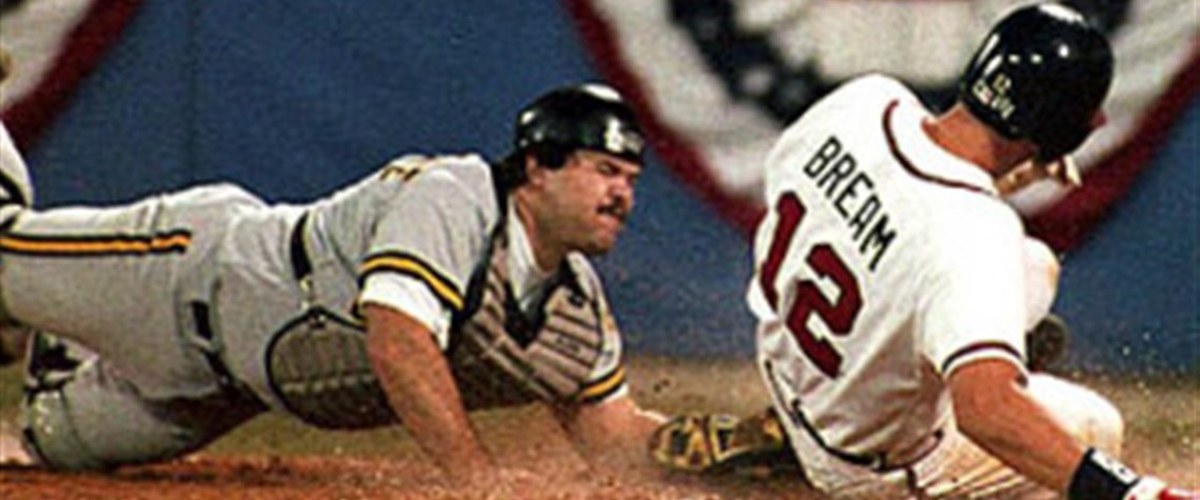
AFTERMATH: Through my teams that I feel were some of the greatest ever not to win, there has been only one other aftermath more heartbreaking than Pittsburgh's. The Pirates, knowing they couldn't be able to keep their stars thanks to the economy of baseball in the 90's, knew their chances of bringing home a World Championship since 1979 were shrinking. Bobby Bonilla was a free agent after the 1991 season and was signed by the Mets (and we know how that turned out). Smiley got traded to Minnesota for prospects including Denny Neagle, (which would be the start of the Pirates trend of trading stars for prospects). Pittsburgh got back to the NLCS in 1992 against Atlanta again, and fought in another Game 7 with the Braves, only to lose in more heartbreaking fashion on a walk-off single by Francisco Cabrera and the winning run was scored by former Pirate Sid Bream on the closest call possible (my father-in-law still think he was out, but anyway...).
After that happened, the stars moved elsewhere. The issue was about revenue that the Pirates didn't have thanks to the cavernous Three Rivers Stadium. Bonds signed with the Giants after 92. Drabek signed with Houston and the Pirates fall began. After the 1994 strike happened, the others like Bell, King, and Van Slyke all had new residences. Pittsburgh continued to have drafts that backfired on them and prospects that were not ready for the Show. And it would be a trend that would continue for 20 years even with their great park of PNC Park. It would have to take a spike with drafts to get the likes of Andrew McCutchen, Gerritt Cole, Starling Marte, and Gregory Polanco to change the ways of the Pirates fortunes.
OTHER TEAMS
-Fan in Obstructed Seat
Like My Facebook Page

